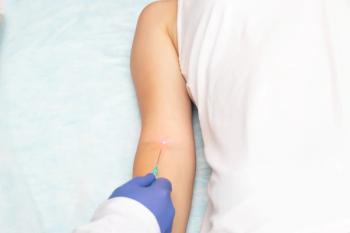
Nanosensor Improves Surgeon Accuracy During Cancer Operations
Device helps surgeons distinguish between cancerous and non-cancerous tissues.
A newly-developed
The investigators used multiple mouse models to demonstrate the ability of the transistor-like threshold sensor to illuminate tumor tissue by amplifying pH signals in tumor cells. The results of the study were published in Nature Biomedical Engineering.
“We synthesized an imaging probe that stays dark in normal tissues but switches on like a light bulb when it reaches solid tumors,” said senior author Dr Jinming Gao. “The purpose is to allow surgeons to see tumors better during surgery.”
When pH signals in tumor cells are amplified, it makes it easier to more accurately distinguish them from normal cells.
“Cancer is a very diverse set of disease, but it does have some universal features,” said co-author Dr Baran Sumer. “Tumors do not have the same pH as normal tissue. Tumors are acidic, and they secrete acids into the surrounding tissue. It’s a very consistent difference and was discovered in the 1920’s.”
The investigators are hopeful that the nanosensor-guided surgery will benefit cancer patients in the future in several ways, including more accurate tumor removal and greater preservation of functional normal tissues.
“These advantages can improve both survival and quality of life,” Sumer said.
Furthermore, it could potentially help cancer patients who experience adverse effects, such as incontinence after rectal cancer surgery.
“This new technology also can potentially assist radiologists by helping them to reduce false rates in imaging, and assist cancer researchers with non-invasive monitoring of drug responses,” Dr Gao said.
Newsletter
Stay informed on drug updates, treatment guidelines, and pharmacy practice trends—subscribe to Pharmacy Times for weekly clinical insights.













































































































































































































